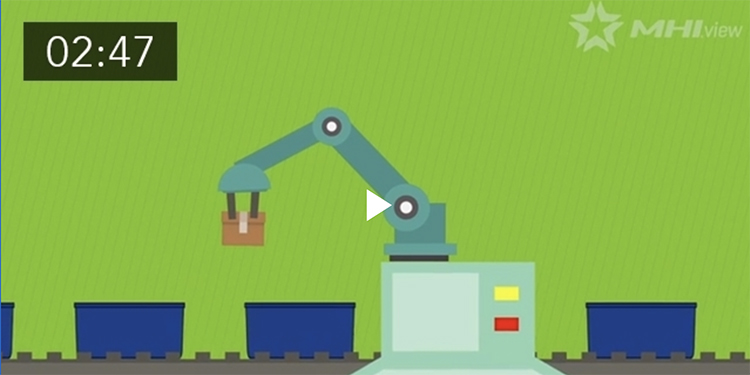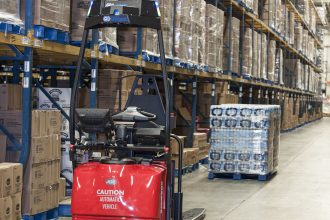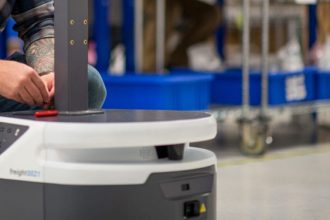Robotics in Logistics, Part 2 – You’ve Decided to Add Robots—Now What?

As robots become more common on warehousing and manufacturing floors, more companies are intrigued by the benefits they might offer their operations. If you’ve been investigating robots and have determined their addition is justified in your operations, you are ready for the next step in your journey. That involves writing a good spec document, often called a request for proposal (RFP), to submit to potential robotics partners.
In writing that RFP, there are a number of important pieces you must include. First and foremost, you must think of your requirements for today and tomorrow. These requirements must be well documented and clear, including how much your operations might grow in the coming years. From the time you send out the RFP until a system is fully up and running it may take one to two years. For instance, if you forecast you’ll experience growth at a 10 percent rate per year, you must plan for that capacity at startup and for the coming years. You should also involve all the necessary stakeholders in the company for their input to align on correct growth rates and the expected maximum capacity of the system you plan to purchase. Maximum capacity should also include any seasonal, weekly, or even intra day peaks that the system may need to handle.
When considering your financial data, you’ll need to convert that into the actual physical movement in the warehouse. This is not always clear as the business often only projects future growth of revenue but that may include inflation, price increases, new SKUs, new business units, additional services, etc. How many boxes are you moving now and in the coming years? How many pieces are you picking? Translating your sales data into your warehouse movements is key information for a robotics RFP. Don’t forget other areas of growth that may affect the system design such as additional SKUs, more inventory, and improved service level requirements. All of these items may cause you to require a bigger or more complex system in the future than what you might need for today.
From there, outline your IT requirements and interfaces. How would your IT architecture and the robots fit together? Make sure you include this in your RFP so that your vendors can put that into their equation. Also share your safety and quality requirements to ensure you’re finding a vendor who will meet those standards. If you don’t include this bit of information, your vendors will go with basic national standards because they won’t necessarily understand your local or state requirements, nor your company’s individual requirements.
It is also important to define your expectations of the system and how you would plan to test the system to verify that it works properly. What metrics are important to you and how could they be properly tested once the system is up and running? The earlier you can bring up this discussion with the vendors the easier it will be to insure the system they deliver will perform at the level you expect.
Once your RFP is complete with all the necessary details, it’s time to send it out to potential partners—typically you’ll want to whittle this list down to three or four key candidates who are capable and qualified to meet your needs. The reason for keeping the list short is that combing through vendor bid responses and attending to all of the related discussions with the vendors is a serious time investment, so every additional vendor adds work to the plate of everyone involved. The vendors will put a lot of effort into developing a proper proposal, so it is only fair to invite companies to bid that could have a legitimate chance of winning the project. If you include too many on your bid list, you run the risk of a good vendor dropping out of the process because they feel that they don’t have an honest chance to win the work.
As you send your RFP out, develop a good pricing template to facilitate your process of choosing a vendor. This will allow you to compare the vendors on equal footing and also, help you understand the differences between what one vendor can deliver versus another.
From the time you send out your RFP until the time you receive proposals back can range anywhere from four to twelve weeks, depending on the complexity of the project and the vendors you chose to speak with. It is typically better to give more time than less so be sure to start your bid process early to give the vendors enough time to make a proper proposal. The better the RFP you send out, the better the proposals you’ll receive back and this can help add speed to the overall process if needed
When you receive the responses to your RFP, dedicate time to evaluate them in serious technical detail. Spend extra time understanding the differences between your two finalists and consider the full worth of all they are offering. The best system for you is often not the least expensive but rather the one that gives the most value to your business.
A final note: don’t forget to include and negotiate the maintenance contract before selecting a vendor and signing a robotics contract. This will keep you in the know for any and all expenses down the road, preventing hidden expense costs in the future.
To learn more about The Robotics Group (TRG): https://www.mhi.org/robotics
To read more about the Buyer’s Journey:
Will Robots Change Your Warehouse Culture?
Robots Make Work Easier For Humans
When Flooring Takes Center Stage In Robotics
How To Avoid Potential Pitfalls Of Robotics Ownership
Your Guide To Successful Metrics For Automation Implementation



